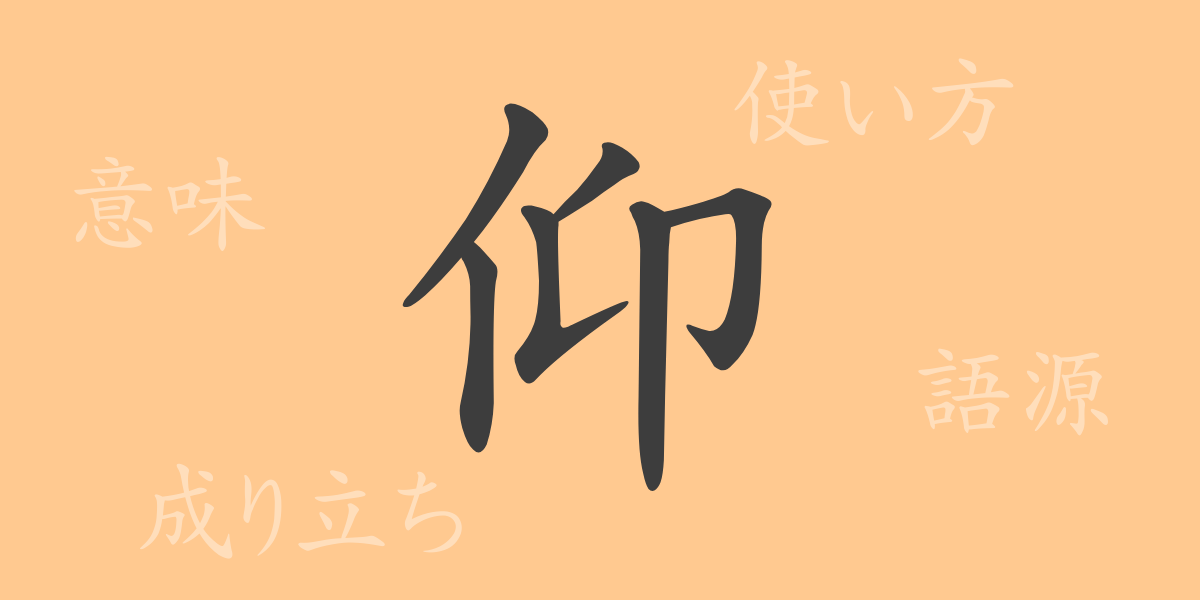Japanese is rich with characters that enable diverse expressions of emotions, actions, nature, and society. Among these, the frequently used kanji “仰(あお)ぐ” adds depth and diversity to our language. This article delves into the history, meaning, and everyday usage of the character “仰(あお)ぐ”.
Origin of 仰(あお)ぐ
The kanji “仰(あお)ぐ” originates from ancient China. Evolving from ancient pictographs, this character originally depicted a person looking up at something. Over time, its form and meaning changed to the present “仰(あお)ぐ”. This character symbolizes the act of looking up, as well as actions involving respect or request, and it is used in various ways in language.
Meaning and Usage of 仰(あお)ぐ
The kanji “仰(あお)ぐ” primarily means “to look up,” “to ask,” or “to respect.” In everyday usage, it is often used when a person requests something from someone of higher status or when expressing feelings of respect. Additionally, it is used to describe the literal act of looking up at the sky or high objects.
Readings, Stroke Count, and Radical of 仰(あお)ぐ
Understanding the readings and structure of the kanji “仰(あお)ぐ” can deepen our understanding of it.
- Readings: The on’yomi (Chinese reading) is “ギョウ(ぎょう),” and the kun’yomi (Japanese reading) is “あお.ぐ” and “おお.せ.”
- Stroke count: “仰(あお)ぐ” has 6 strokes.
- Radical: The radical is “人(ひと)” (person).
Idioms, Expressions, and Proverbs Using 仰(あお)ぐ
There are numerous idioms, expressions, and proverbs in Japanese that incorporate the kanji “仰(あお)ぐ”. These expressions reflect Japanese culture and values, highlighting the depth of the language.
- 仰天する(ぎょうてんする): To be extremely surprised.
- 仰ぐ(あおぐ): To look up or to respect and rely on.
- 仰せのままに(おおせのままに): To comply with someone’s command.
- 仰ぎ見る(あおぎみる): To look up with respect or admiration.
- 仰せつかる(おおせつかる): To receive orders or instructions from a superior.
Conclusion on 仰(あお)ぐ
Through this article, we hope you have gained an understanding of the meaning embedded in the kanji “仰(あお)ぐ” and how it is used in the Japanese language. This ancient character encompasses many concepts of respect, request, and daily life. When learning Japanese, kanji like “仰(あお)ぐ” provide valuable insights into the cultural and historical contexts behind the words.

























